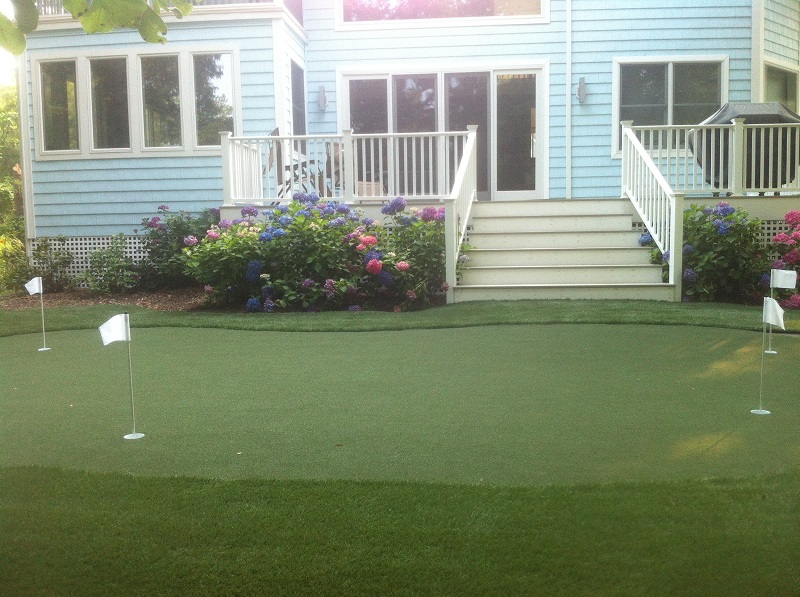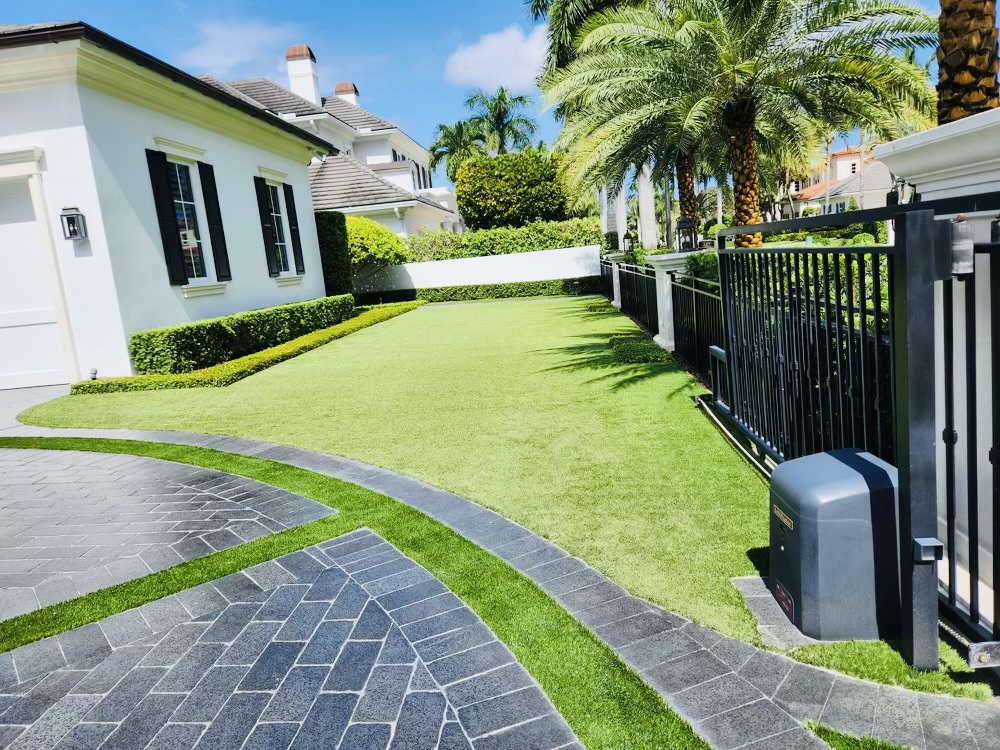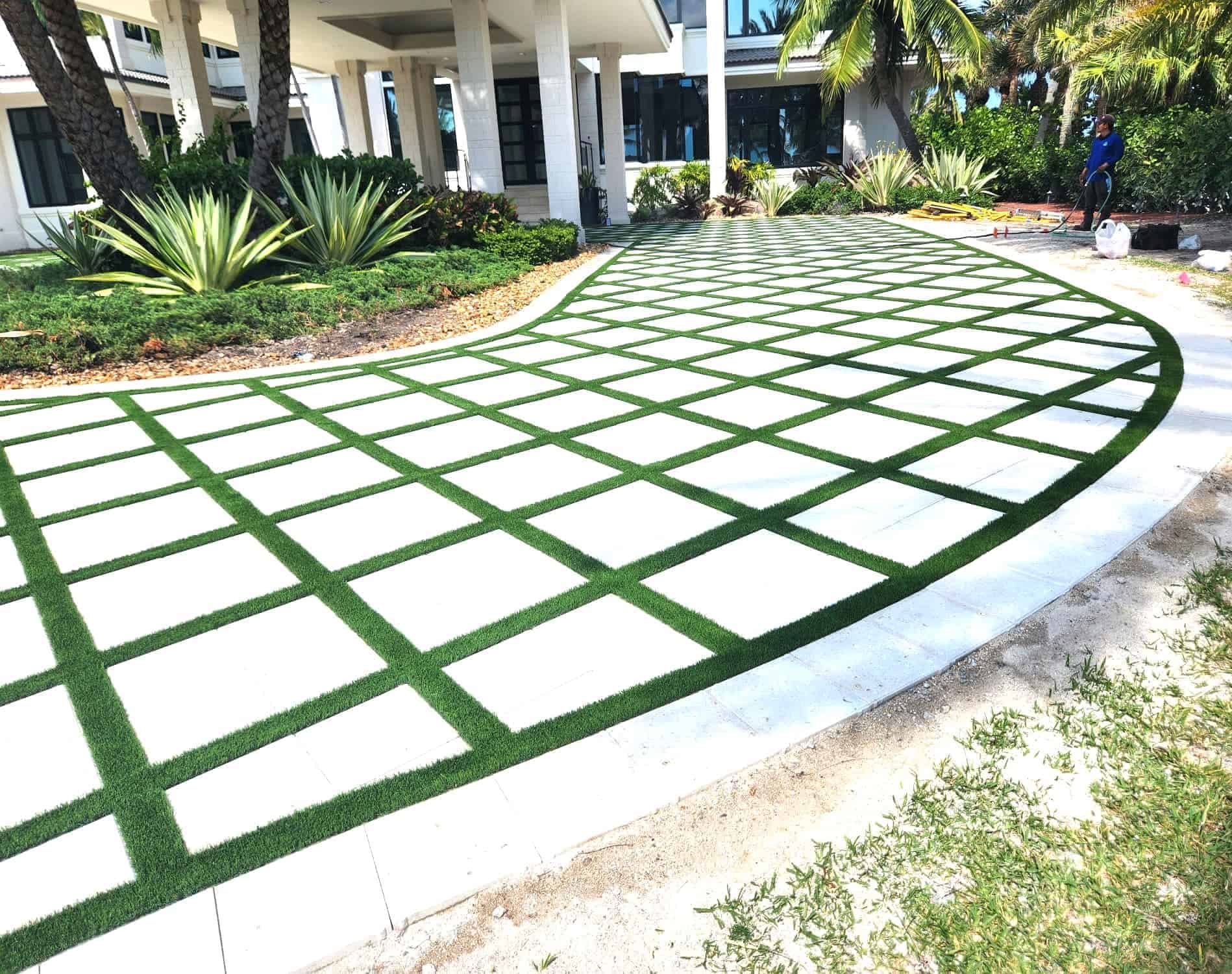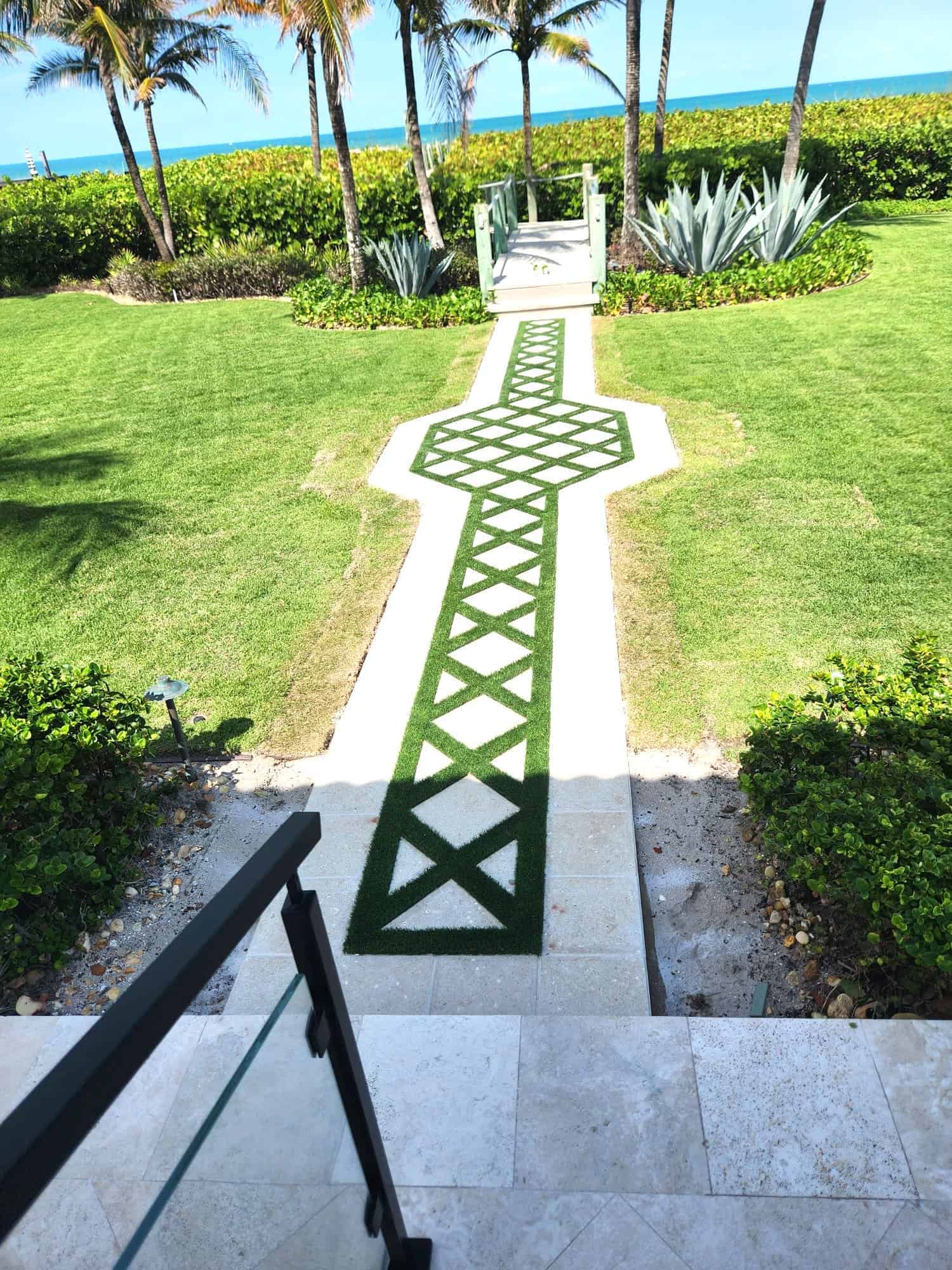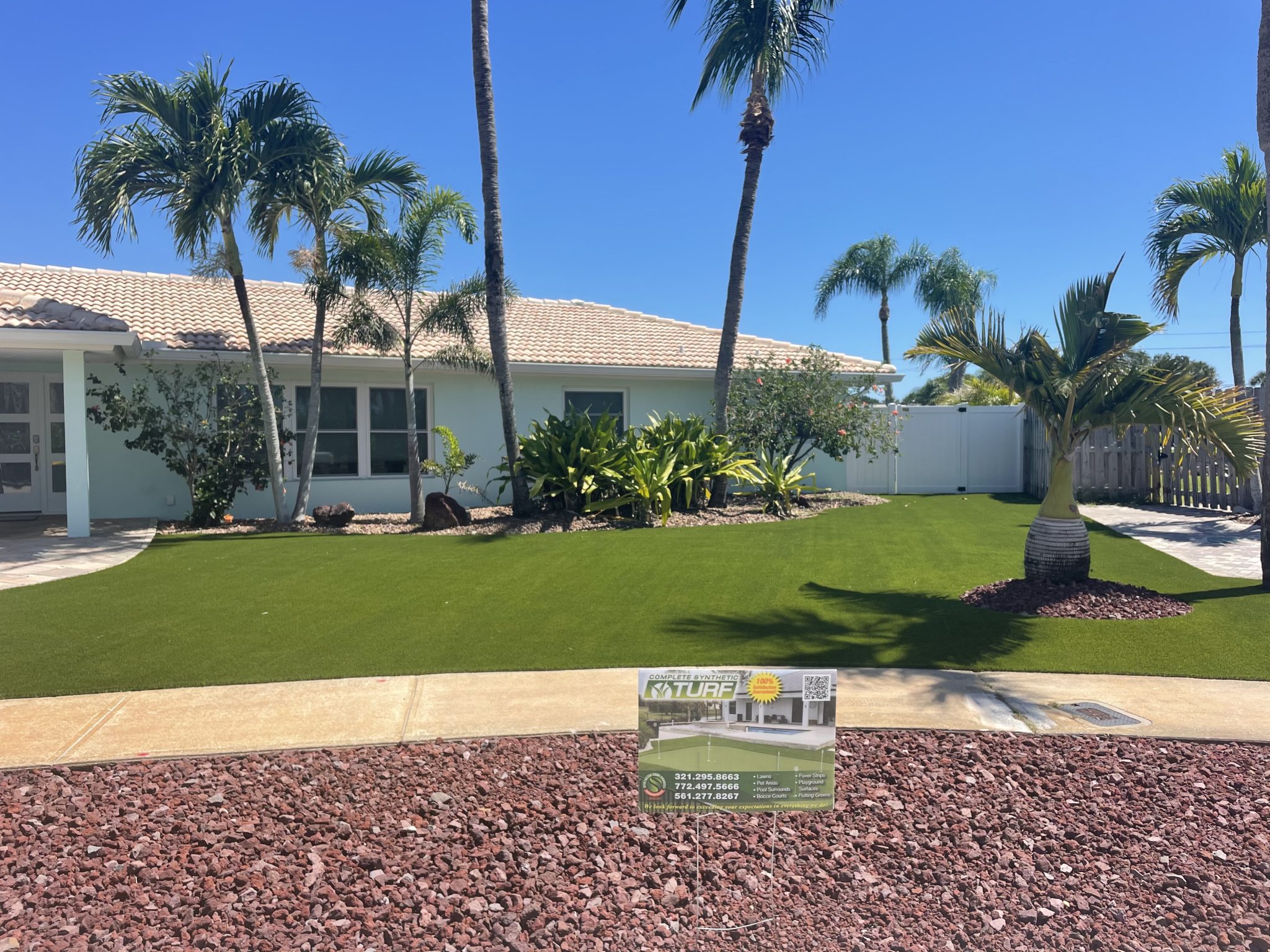
Like most people, you probably want to know how to live a greener life. When going green, there’s one thing you can change to make a difference — your lawn.
Americans use 320 gallons of water per day. Around 30% of that goes into lawns and gardens.
We know conserving water is important for the environment. But using less water is only one part of the equation.
Let’s look at how the natural lawns of America aren’t as great for nature as they seem.
History of Lawns
When you picture the perfect image of American life, a nice home with a bright green lawn springs to mind. Why are lawns attached to so many American homes?
The concept of the lawn as we know it has its roots in early Europe. The wealthy aristocracy wanted to create a cultivated forest and field environment at their sprawling estates.
Europe’s climate is better suited for grass and the aristocracy had the cash to maintain it. It takes a lot more to keep it looking good here in the states, even with modern equipment.
Carbon Footprint of Lawns
Everyone learns the basic facts about plants absorbing carbon emissions in grade school. Considering this, it seems like lawns would be a great way to reduce carbon in the environment.
Researchers have found that manicured lawns actually create more harmful carbon emissions than they absorb. The reason is that the carbon the lawn stores is released the moment you give it a trim.
If you let your lawn grown and never cut it, you would reduce your carbon footprint. Unfortunately, that’s not always possible, and you’ll release stored carbon every weekend spent mowing the lawn.
Fertilizer and Chemicals
That lawn you love requires a lot of upkeep. Pesticides, herbicides, fertilizer, and more are added in an effort to keep it green and weed-free.
Dumping these sorts of chemicals into your grass might make it look nice, but it comes at a price. Those additives harm the environment in different ways.
Some lawn additives can be harmful to pets, kids, and adults when they come in contact with them. Breathing in the chemicals or getting them on your skin can cause irritation.
Outside of your home, the water carrying these chemicals washes off of your lawn and flows out into the world. It goes into the water we drink and can even have harmful effects, like causing algae blooms, in the environment.
Native Plants and Animals
The grass used in lawns is usually not native to your area. Not only does this make it difficult to maintain but it doesn’t support the local environment.
Local pollinators like bees can’t get anything from grass. Planting a few bee-friendly flowers is a start but it’s not enough.
Insect and animals native to your ecosystem are crowded out by grass they can’t eat or use. It damages the natural rhythm of life, creating a domino effect down the line.
Water Usage
We touched on the huge amount of water your lawn guzzles every year earlier. It’s an enormous problem because green lawns are thirsty lawns.
As we mentioned before, a third of our water usage goes to maintain unnaturally green landscapes. With global temperatures rising, water evaporates quicker, meaning we have to use more and more water for our lawns.
This also causes a chain reaction that makes water scarcer right when we need it most. Drought brought on by excessive water usage is a real danger we all face.
Next time you’re watering your grass, think about how that water could go towards something that needs it more. Limiting consumption is a start, but there’s more you can do.
Make an Eco-Friendly Lawn
Starting today, you can try to limit water consumption. Collect and store water in rain barrels and then redistribute it to conserve resources.
Try to find natural plants that prevent weeds or invasive insects. Flowers like petunias or herbs like mint and rosemary have insect repelling qualities that can help your garden thrive.
You can also plant flowers that attract butterflies and bees. Your efforts will look beautiful and you’ll give a hand to your local pollinators.
What to Grow Instead of Grass
Want to take your eco-friendly lawn to the next level? Consider replacing your grass with healthier options.
Figure out what plants grow best where you live. You’re looking for something that looks nice while requiring little maintenance.
Groundcovers are plants that never need mowing because they grow low to the ground. Plants like creeping jenny and Asian star jasmine are two beautiful alternatives to grass.
Ornamental grass also needs zero mowing and does well in hot, harsh environments. This low-maintenance plant grows in attractive clusters, giving your lawn personality.
Consider growing a food garden. That way you can put all of that green space to work for you.
Alternatives to Natural Lawns of America
Ready to ditch your lawn altogether? There are plenty of ideas to choose from.
You can replace the grass with beautiful flagstones and gravel. Add in some greenery with hardy succulents.
Pave over your lawn and add attractive decorative tile. You can make our entire backyard an extension of your patio.
Still want that beautiful green expanse? Consider artificial turf.
It needs only an occasional rinsing, lowering your water consumption. You’ll never need to mow it so say goodbye to hot days pushing a lawnmower around in the sun.
Artificial turf is often made out of eco-friendly recycled materials, too. Add in accents of pollinator plants or veggies and fruits to round out a low-maintenance artificial lawn.
Go Green — Change Your Lawn
Going green starts at home. It’s time to change your lawn for the best.
It’s easier than ever to create a landscape that’s eco-friendly and better for the environment. You can start a movement to change the natural lawns of America for the better right in your own backyard!
Ready to switch over to artificial turf? We can get you started today!
We’re ready to answer all of your questions. Reach out to us today and create a greener world for the future!

